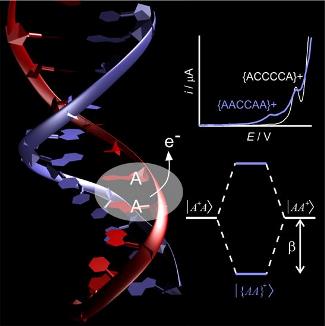
Amedeo Capobianco
Professor
Title: Hole transport in oxidized DNA: an integrated approach based on electrochemistry, spectroscopy and quantum chemistry
Biography
Biography: Amedeo Capobianco
Abstract
Singly ionized DNA exhibits long range hole transport (HT) covering distances up to 200 Å [1]. Hole transport has great biochemical and technological relevance, as it controls the site distribution of the oxidative damage in DNA and makes DNA a potential conduit for nanoelectronics, used both as template and as active component. Different mechanisms for the hole transport have been invoked so far: ion gated transport, thermal activated hopping, and superexchange among others. Independent of the kinetic mechanism, the of hole transfer in oxidized DNA is modulated by the complex mosaic of low-lying electronic states, whose accessibility depends on the effective in-situ hole energies of nucleobases and the electronic couplings between interacting nucleobases.The hole energies for adenine (A) and guanine sites were previously quantified by using voltammetry, the influence of hydrogen bonds on the oxidation potential was also determined. Information for cytosine oxidation was inferred by spectroelectrochemistry experiments.Here we have focused our attention on electronic coupling parameters. The latter have been estimated by the lowering of the oxidation potential observed for DNA oligonucleotides containing an increasing number of stacked homo-purine nucleobases. Voltammetric data were interpreted in terms of the two state model. Experimental results were further confirmed by theoretical computations carried out at the full quantum level for single and double stranded oligonucleotides including sugar-phosphate backbone and solvation.The observed lowering of the oxidation potential for single stranded oligonucleotides containing an increasing number of adjacent adenines amounts to ca 0.3 V for the AA step, in good agreement with theoretical predictions. That result suggests that adenine tracts give rise to delocalized hole domains (Figure 1), greatly facilitating hole transport in DNA . Although stacking interactions are found to be less effective in stabilizing the positive charge on adjacent guanines inside a strand, our results confirm that guanine tracts constitute a very efficient trap for the hole .


